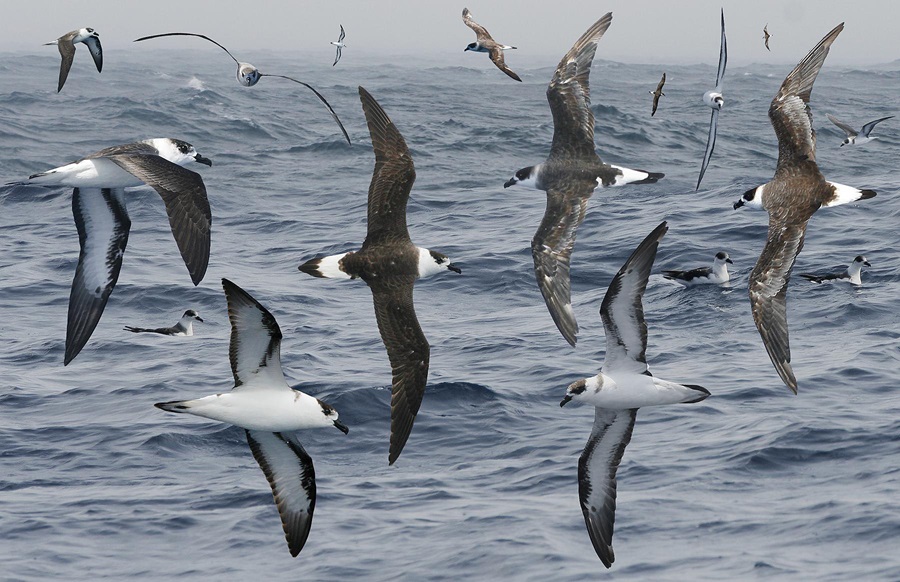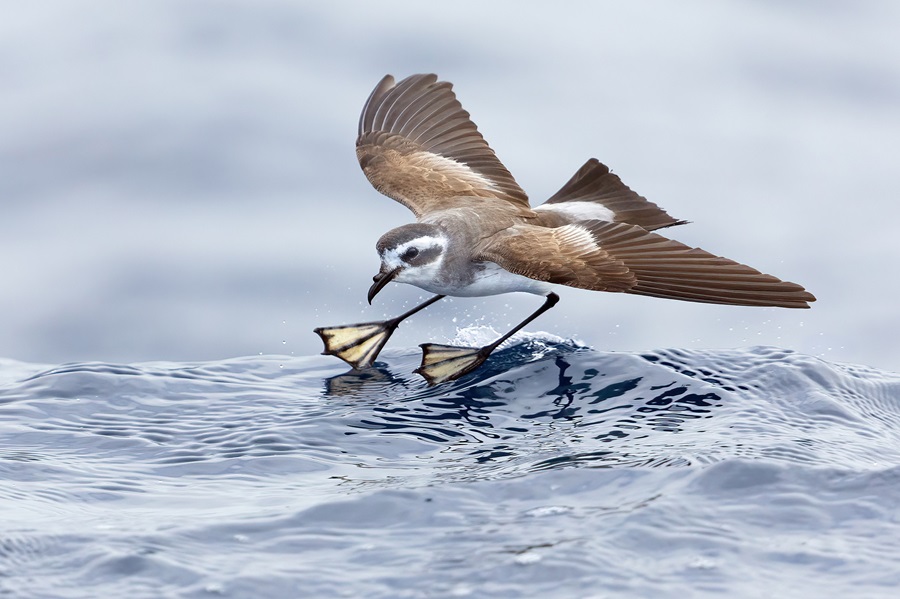I’ve always loved visiting nature in ways that make me feel out of my element. We have so dominated nature, so domesticated it, so segregated it from our normal lives that getting to experience a version of it where we do not feel in control is a rare and thrilling thing. Out here, perhaps the easiest way to get there is by heading to the open ocean.
In late June, with friends visiting friends from Ottawa, Canada, we got on a boat to watch whales. None of my friends had seen a whale before, so that was their focus. I wanted to see whales, too, course, but to be honest, I was looking for birds.
The four of us took our seats on the second floor, which gave us great views off the side of the boat. The horn blew, and we departed. Within minutes, the first marine mammals began appearing: we spotted a pod of 25 or so Atlantic white-sided dolphins right in Provincetown Harbor, and our arrival at Stellwagen Bank was greeted by a pair of humpback whales.

The birds began changing, too. There were still gulls, as we would expect close to shore, but there were fewer of them, and new birds began appearing to replace them. Looking off the port side of the boat, something that resembled a large, dark butterfly flapped over the water’s surface. It was a Wilson’s storm-petrel, a type of oceanic bird known as tubenoses.
Tubenoses are the stars of the show when it comes to offshore birding, as they are usually far easier to see here than they are from shore. They’re called tubenoses because their nostrils are enclosed in tubes, which help them process salt. They also give them a slightly rhinoceros-like appearance.
Out here, we have two main types of tubenoses in the summer: the small fluttery storm-petrels and the larger gliding shearwaters. Wilson’s is the only regularly occurring variety of storm-petrel out here, but we get four species of shearwaters every summer: the black-and-white Manx shearwater, the brown-and-white Cory’s and great shearwaters, and the all-dark sooty shearwater.
I wish I could say we saw plenty of these seabirds. A handful of Wilson’s storm-petrels was it — we didn’t see any shearwaters that day. Maybe I was distracted. Maybe it was too early in the season. It was just one of those days where you don’t see much. I might as well admit the truth here: those days are part of birdwatching.
As the summer heats up, more tubenoses will congregate around Stellwagen Bank, so you can expect to see more species come July and August from on board a whale watch boat.
Unlike most birds, which hunt by sight, tubenoses find food using their extraordinary sense of smell. Their noses are extremely sensitive to the chemical dimethyl sulfide — it gets described by people as a green, grassy scent with a sweetness verging on decay — which is released by phytoplankton in large volumes when consumed by organisms like krill. The krill is a key food source for tubenoses. One study found some tubenoses can smell dimethyl sulfide released by krill from 12 miles away.

On past whale watches, especially later in the summer, I’ve seen this sense kick in as tubenoses gather and a feeding frenzy forms. One of the best opportunities to see this is around feeding whales themselves, who also congregate to feed on krill. Watching these horn-nosed seabirds share space with some of the largest animals on Earth is an incredible sight.
Larger tubenoses like shearwaters and albatrosses are also among the best fliers in the animal kingdom. They use a flight style called dynamic soaring where they coast up and down just above the waves, taking advantage of the pockets of air between waves to keep aloft while using as little energy as possible. This technique — which also gives shearwaters their name, as their wingtips seem to clip the waves as they fly — allows some tubenoses to fly as far as 3,000 miles in a week while barely flapping their wings.
And they need this speed and efficiency, because tubenoses are some of the longest-migrating birds on the planet. Only one of the five regular tubenoses, Manx shearwaters, breed in North America at all — the rest come from far away.
Like so many Provincetown families, Cory’s shearwaters come here from the Azores and surrounding islands. Sooty and Wilson’s storm-petrels, meanwhile, breed only south of the equator. Great shearwaters are particularly impressive: nearly the entire population breeds on the Tristan Archipelago, a remote island group in the South Atlantic that is on the same latitude as Cape Town, South Africa. Yet somehow these birds make it here, and by the thousands.
Watching these birds is such a delight. Wilson’s storm-petrels patter their feet on the water as they pluck plankton off the surface. Shearwaters arc dramatically through the sky and sometimes feed by diving beneath the surface and paddling with their wings into the depths.
We are so lucky on Cape Cod that you can just get on a boat and see birds like these. If you have the opportunity this summer to get on a whale watch boat, take it — and not only to see some incredible marine mammals. If you’re lucky, you’ll get to see the tubenoses, too.



